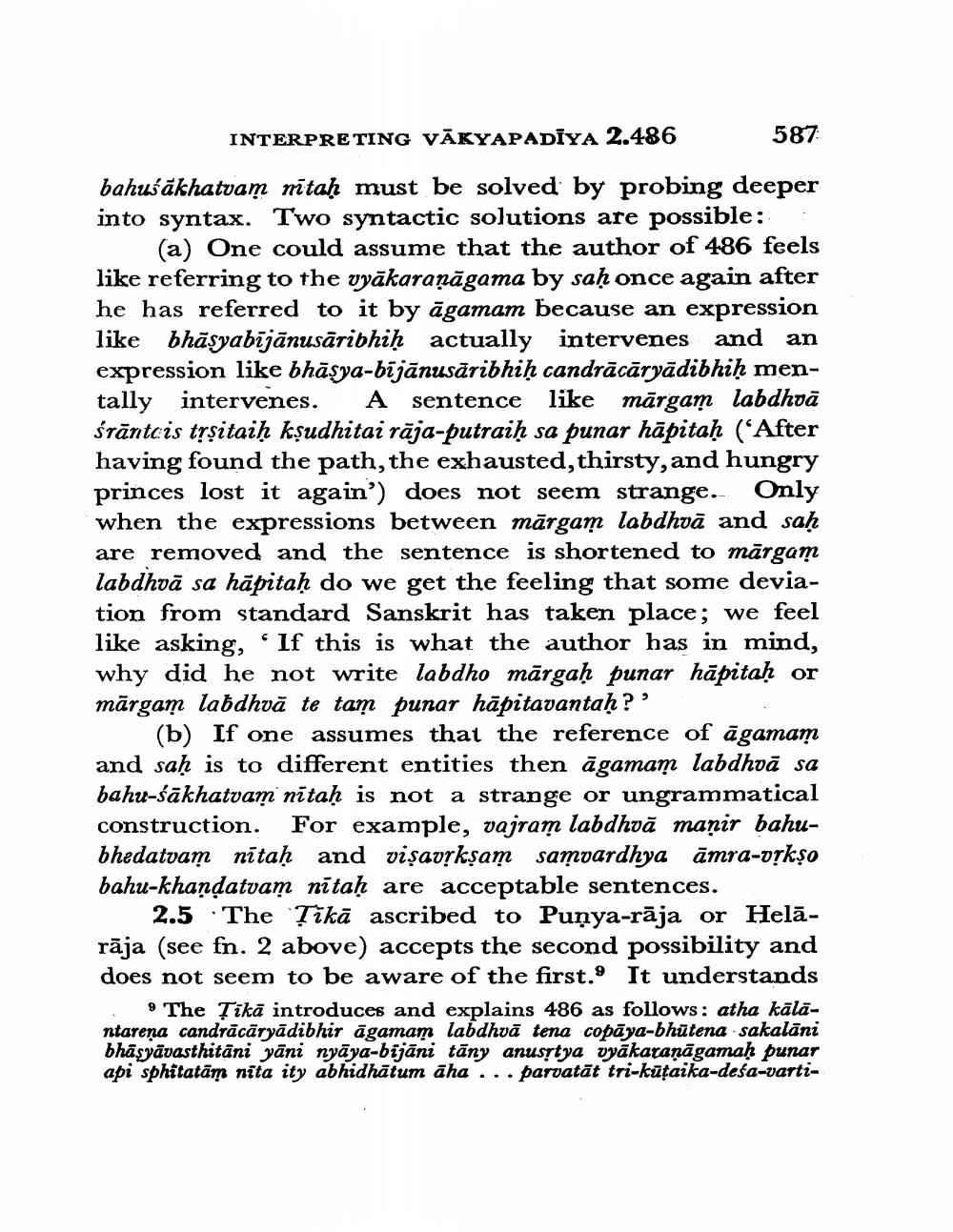Book Title: Interpreting Vakyapadiya Historically Author(s): Ashok Aklujkar Publisher: Ashok Aklujkar View full book textPage 7
________________ INTERPRETING VĀKYAPADIYA 2.486 587 bahuśākhatvam nītaḥ must be solved by probing deeper into syntax. Two syntactic solutions are possible: (a) One could assume that the author of 486 feels like referring to the vyākaraṇāgama by saḥ once again after he has referred to it by āgamam because an expression like bhāsyabījānusāribhiḥ actually intervenes and an expression like bhāsya-bijānusāribhiḥ candrācāryādibhiḥ mentally intervenes. A sentence like mārgam labdhvā śrāntcis trșitaiḥ kṣudhitai rāja-putraiḥ sa punar hāpitaḥ (“After having found the path, the exhausted, thirsty, and hungry princes lost it again') does not seem strange. Only when the expressions between mārgam labdhvā and saḥ are removed and the sentence is shortened to mārgam labdhvā sa hāpitaḥ do we get the feeling that some deviation from standard Sanskrit has taken place; we feel like asking, “If this is what the author has in mind, why did he not write labdho mārgaḥ punar hāpitaḥ or mārgam labdhvā te tam punar hāpitavantaḥ?' (b) If one assumes that the reference of āgamam and saḥ is to different entities then agamam labdhvā sa bahu-śākhatvam nitah is not a strange or ungrammatical construction. For example, vajram labdhvā maņir bahubhedatvam nitaḥ and vişavykşam samvardhya amra-orkşo bahu-khandatvam nītaḥ are acceptable sentences. 2.5 The Țikā ascribed to Punya-rāja or Helārāja (see fn. 2 above) accepts the second possibility and does not seem to be aware of the first. It understands 9 The Tikā introduces and explains 486 as follows: atha kālāntarena candrācāryādibhir āgamam labdhvā tena copāya-bhūtena sakalāni bhāsyāvasthitani yāni nyāya-bijāni tāny anusrtya vyākaraṇāgamaḥ punar api sphitatām nita ity abhidhātum āha ... parvatāt tri-kūțaika-deśa-vartiPage Navigation
1 ... 5 6 7 8 9 10 11 12 13 14 15 16 17 18 19 20 21
